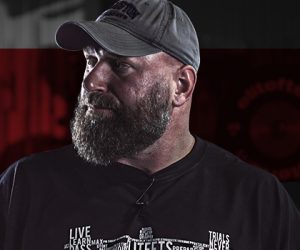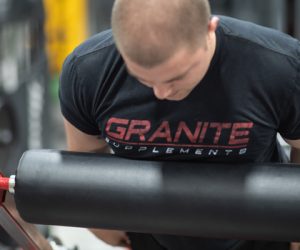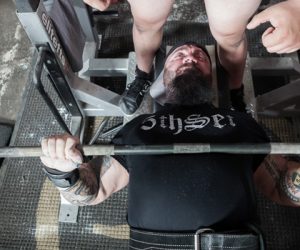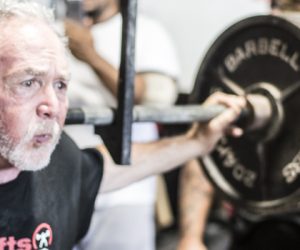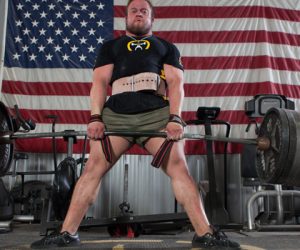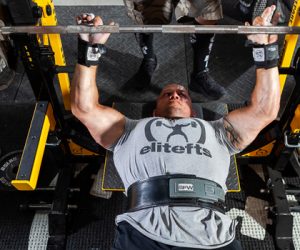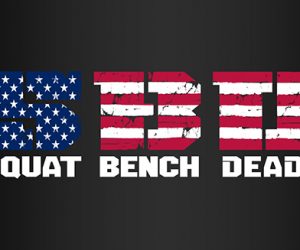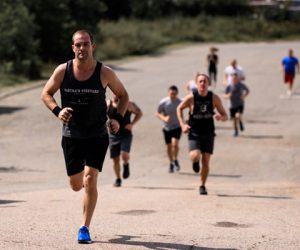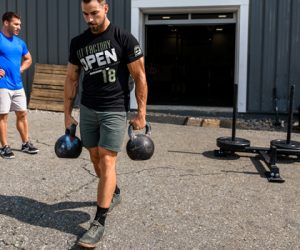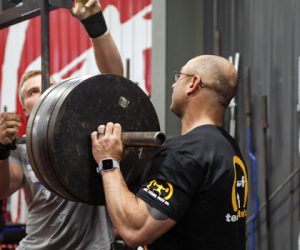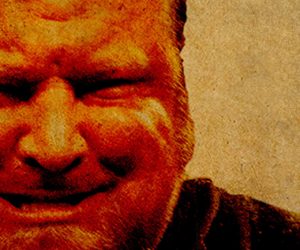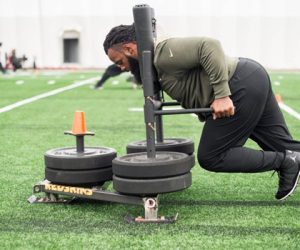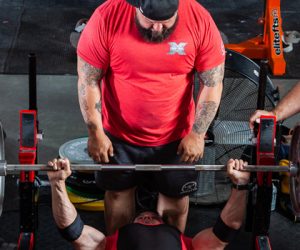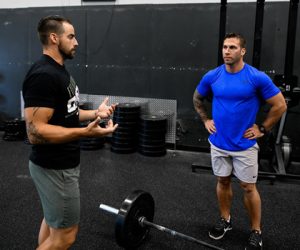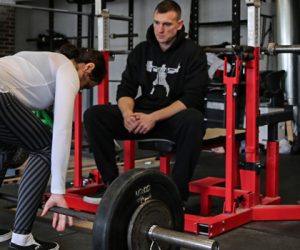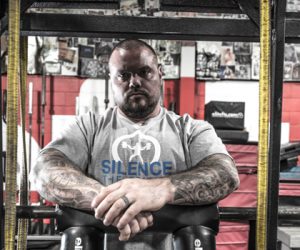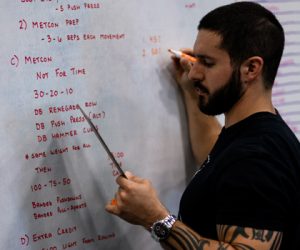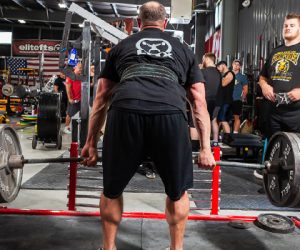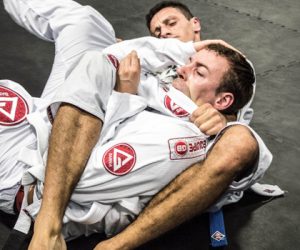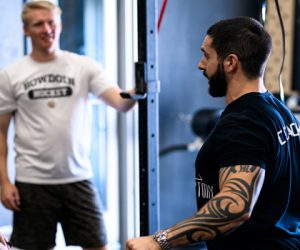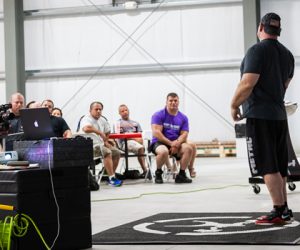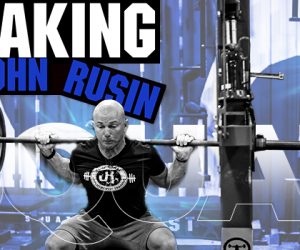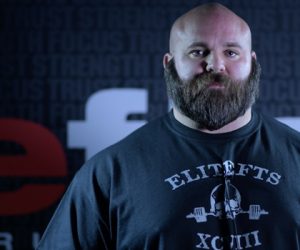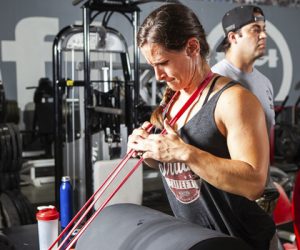Conjugate for General Population Personal Training
Not sure how to apply the conjugate method for training general population clients? Don’t worry about it; I’ll break it down for you right here. It’s easier than you think.
Managing Training Schedules and Economies
My hope for any of you lifters, young or old, novice or elite, would be that you can take a more educated approach to your next training program, and managing your training schedule and economies is a great place to start.
How My Programming's Improved Over the Years
I love and hate programming. When I’m doing research and reading stuff, my brain goes a million miles per hour. Of course, everything I read seems like the greatest idea ever, so I have to dial it down, but I’ve gotten better at it over the years, and it shows.
7 Items Rugby Players (and I) Can't Lift Without
I am seeing that the specific injuries that are inherent in rugby need a modified program that’s not using traditional training equipment to get results, so here are 7 of my non-traditional tools of the trade.
How Many Exercise Variations Do You Need?
When I refer back to what worked best for me in college, I always seem to glean some “new” information by reviewing old material. This time around, I decided to use less variance in my programming by repeating the same special exercises 3 weeks at a time.
The Big Picture of Conjugate
The goal with this series is to get to you to think about how you can manipulate the max effort, dynamic effort, and repeated efforts to fir your needs and to understand that conjugate is a fluid system that requires experimenting.
5 Repeated Effort Method Principles to Master
In conjugate, accessory work plays a huge role, even if it isn’t one that gets the attention. Accessory work is going to help fill your gaps and prevent you from developing new ones.
5 Dynamic Effort Method Principles to Master
As I said in Part 1, conjugate is one of, if not, the most effective training systems when it is executed properly. Moving a light weight fast isn’t enough to make the dynamic effort method work. Moving a light weight fast with intention is.
4 Max Effort Method Principles to Master
In my opinion, conjugate is one of, if not, the best training systems — when employed properly. If it isn’t working, don’t disregard the system; instead, check your application.
More Conjugate For A Little Old Man
I recently turned 78, and that certainly hasn’t stopped me from training. After the responses from last month’s article, I decided to delve a bit deeper into my little old man conjugate training program. Enjoy!
Everything You Need to Know About The Max Effort Method
As with anything in training, the answer always is “it depends.” With the max effort method, I can do one of these things for two hours just on advanced principles that deal with the max effort method, or I can do one very that’s simple. I choose simple.
Vincent Dizenzo's BAMF Program
A few weeks ago I blogged about how I was mistakenly looking for a one-size-fits-all approach to dealing with my injuries, and my circumstances are different. But with the help of four friends (and my wife), we came up with a BAMF program. Here it is.
45 Minutes or Your Money Back
Someone once told me when it came to programming, their objective was to be able to get as much bang for your buck as possible. That stuck with me, so I ensure my programs are of good quality and don’t last more than 45 minutes.
Conjugate For A Little Old Man
People have asked me to write about how I train. I haven’t done it because I figured you guys thought it’d be boring… until now. Here’s a look at my training and the process behind it.
Off-Season Conditioning Lanes
These off-season lane options are meant to keep them in the ballpark of being in game shape without beating the crap out of them. They don’t have to be ready all the time; just ready to get ready. If you think they are not sport-specific enough or intense enough, that’s why.
The Best Conjugate Training Plan
If you understand the conjugate method, can devote 4 to 5 hours of training per week, not competing in sports but is trying to look and feel better, boy, have I got the perfect program for you!
The Most Important Training Article You Will Read This Year
elitefts has a strong focus on the freedom of education — so strong that we’re willing to invest in all of the content we provide for you. For 20 years, the strength of this value has enabled us to earn your trust, and therefore, produce more content.
Game Day Lifting (with Sample Training Session)
During Richland High School’s last football season, I combined the conjugate method and the tier system for programming game day lifts. Seeing the results thus far, I intend to continue the program with a few adjustments — but not before sharing it.
A Hypertrophy Method for Strength Athletes
The thing to keep in mind as you read the remainder of this program is that I’m describing a method of training — not a set-in-stone program. It’s up to you to apply the method to your particular context: your body, your goals, and your life situation.
20 Smarter Alternatives for Traditional Box Exercises
I’ve said this more than once, and I’ll say it again: if you want to better serve your box clients, you need to program for the general population. Here are a couple of things you can ditch doing and what you should be doing instead.
The Lost Art of Training Hard
I’m not suggesting that you destroy yourself. What I am saying is that a lot of new trainers are coming out of school with information about corrective exercises but zero practical experience of knowing how to push people in the gym.
How to Progress in Your Strength Program
Ask yourself: “Is my training program based on me being strongest at every session?” If your answer is an honest yes, you might need to reconsider your program. Here’s how you can improve it.
The Grand Unified Theory of Everything
A few years ago, I attempted to bring 4 strength sports together into a training plan for rugby. This time, I want to delve deeper into the framework that makes up the programming of these sports and how we can program them into a usable athletic development plan.
GPP Training: You're Doing It Wrong
If your client cannot pull a sled or carry two heavy kettlebells without having to rest excessively between sets, you need to implement GPP to build your clients’ foundations. But you need to implement it the right way.
How to Build a Mesocycle
Training is like traveling; you have to map out the route you want to take in the timeframe you have. For training, planning your mesocycle is a good place to start that journey — you have to understand the basic principle of progressive overload and take your maximum ability to recover into consideration.
How to Improve Box Programming
Consider how your clients are responding to stress and the demands of your program and what we need to consider to devise a better plan. That’s how we’ll improve this sport.
How to Build a Yearly Plan for Powerlifters
Plan, execute, evaluate, readjust, and repeat. Those are the steps I take when developing a program for a client — and coincidentally, the same ones I cover in this article.
Strength Programs Don't Work
Unless you just have some crazy genetics or happen to be the perfect person for a strength program, the majority of these programs are not a valid long-term plan. But don’t throw out the baby with the bathwater…
Ocham’s Razor and the Pareto Principle in Weight Training Programming
According to the Pareto Principle, 80% of results come from 20% of your time. Ocham’s Razor states the simplest solution tends to be the best one. Simplicity is the missing ingredient in most training programs. Hence why I return to the famous paradigm of the pull-push-squat.
The Specific Demands and Application of Conditioning for Sports
With all the knowledge we have available to us, you would think that we have gotten past the idea that distance running will get an athlete in shape for any sport. So how should we program for athletes? Sport-specific? Sort of. In order to approach something that is actually sport-specific, we must take into account the actual demands of the
How I Trained for a 600-Pound Bench
I’d been using the same blueprint that goes to 500 to get me to 585, and that’s where I went wrong. I had to analyze everything in order to customize a new plan to break that 600-pound barrier. This is how I did that.
The Art of Programming for Injury Prevention/Risk Management
I believe the most important role of a strength and conditioning coach is to create programs that minimize the risk of injury. Armed with knowledge from a study on rugby injuries, I wrote a program that focuses on strengthening injury-prone areas. Here’s what I came up with.
The Future of Box Programming
I’ve seen an influx of boxes close over this last year—more than prior years. This tells me that we need to change to survive. My suggestion? Pull away from the hardcore box audience and focus more on programming for the general population.
General Criteria to Consider When Writing a Program
It’s important to note that there isn’t a one-size-fits-all training protocol, and these are just some general suggestions based on a few successes and countless failures over my career that I consider when writing a program.
Peaking for Sport
If speed is what we’re going after, then why do the weights on both our heavy and light days continue to climb, and bar speed continues to fall? As we get deeper into the competitive season and continue to put more tonnage on the athletes, we are burning the candle at both ends.
Circuits and Supersets for BAMF Wrestlers
Steve “Kono” Konopka and I cover our daily pre-practice warm-ups, bulletproof shoulder circuits, what we call the “f@#k the bottom, you belong at the top” conditioning circuit, and answer a couple of questions in the third part of our #BAMF Wrestler series.
Running Cycles at Boxes: Stop Wasting Your Clients' Time
I’m not going to waste your time today, so I’ll get right to the point. Here is my list of reasons why you should avoid linear programming for group box classes at your facility like the plague. Your clients will thank you — maybe not directly, but at least by continuing to show up for class.
Performance Drive Response
Reading Al Miller’s “The System” made me think about my most successful program. I’ve dubbed this hodgepodge of six years in strength and conditioning “Performance Drive Response,” which is a culmination of a bunch of different systems I’ve used, seen, and been in or part of.
The Single, the Heavy Single and the 1RM: Know the Difference
Where part of the problem lies is in the assumption that a single should always or usually be heavy or maxed. The single, the heavy single, and the 1RM should really be seen as three different terms entirely.
The Strength Coach’s Guide to Brazilian Jiu-Jitsu
As Brazilian Jiu-Jitsu grows more popular, so does misinformation about training for the martial art. This article will provide both empirical and anecdotal information about strength and conditioning for this particular combat sport.
The Simplicity Project: Expanding to Two-A-Days for Strength and Size
The people have spoken, and I have answered. After receiving plenty of emails and comments about my last article, I decided to create and share a complete program based on The Simplicity Programming Project.
The Most Valuable Aspect of Box Group Programming
While many coaches preach “do extra” before and after in order to perform arguably the most valuable aspect of group programming, your clients do not need to show up early for class or stay late to accomplish this.
Solve the Progression Code with Axiomatic Strength Training
Once you learn how to activate muscles effectively, you’ll always see some progress in your training. Start here with the basics of axiomatic conditions.
How to Train While Working a Physical Job — Create Your Program
Once you go through these seven steps, you should have a nice simple program that will allow you to reach your goals while staying true to your priorities and meshing with your daily work demands.
The Simplicity Project
By simplicity, I am referring to a minimalist approach to the programming of weight training by getting a maximum effect for the fewest number of exercises by utilizing a full body program performed three days a week. I want to challenge you all to give this a try for a period of no less than six weeks.
Higher Rep Work with the Conjugate Method
Higher rep work can be beneficial, but it needs to be properly managed. We are still going to use 1-rep maxes for our primary means of developing intra/intermuscular coordination, but there are a few strategies we can use to ensure we incur extra volume when needed.
Programming for a BAMF Wrestler (with Samples)
Steve “Kono” Konopka and I go more in-depth about our wrestling programs, particularly topics covering: in-season training goals, off-season exercises to avoid, signs for a recovery session, favorite exercises, and a sample in-season schedule.
Strength, Velocity, Power — How You Can Build Each to Produce Ballistic ...
Essentially, force (strength), velocity and speed-strength (power) are the three main characteristics that are present in ballistic movements, and you can train all of them in the weight room.
Training Considerations for Soldiers
Since most units don’t really allow for rest days other than the weekend, I’m looking for the biggest-bang-for-my-buck exercises that I could be able to fit into a morning training session. Also, I’m working based on the assumption that Fridays are company/battery runs.
Why Strength Training is Equally Important as Conditioning (With Template)
For the record, I’m not writing this article to bash box programming; I’m writing this to present an alternative way of doing things while STILL utilizing the best aspects of box programming. Our strength training model is what we’ve used with nearly 20,000 athletes (in a group setting) worldwide with great success.
How to Train While Working a Physical Job
You may have several points in your life where you’ll see the contrast of differing lifestyles on training and programming. While the principles of your training philosophy may remain the same no matter what job you have, how those principles are applied differs based on the situation.
Program Guidelines for Young Strength Coaches
Approach programming as you would approach written materials relevant to our field. One doesn’t simply open Supertraining, and begin perusing its contents. Supertraining requires a foundation of knowledge prior to endeavoring to cognize its contents.
4 Box Programming Issues with Solutions
Follow these basic tenets of efficient programming to avoid lower back pain, shoulder discomfort, knee stress, and burnout that can potentially take us or our clients out of the game.
7 Steps to Running a Successful Group Training Program
How the hell do I design an effective and appropriate program for all of these different types of people who are training in the same session?
Learn to Train X: Dynamic Correspondence to the Platform
Focusing on this concept of carry-over helps powerlifters train in a more intentional and strategic way, ultimately bolstering overall performance come meet day.
WATCH: Breaking John Rusin — The Squat
Through this series, we’ll venture from power lift to power lift (beginning with the squat) and finalize the project with a program tune-up. Dr. John Rusin’s overall goal is to get stronger with the help of Dave Tate.
You’re Training Athletes, Not Lifters
I had those days, especially early on in my career, that I didn’t understand why the athletes weren’t as enthusiastic as I was at 6 AM. I mean, what the hell is better than getting up early and training your ass off?
Strategic Variation: The Misunderstood Key to Long-Term Growth
Muscle growth doesn’t happen overnight. So, instead of thinking you have to hit every fiber from every angle right now, realize that hitting them all over the course of several months will be far superior for your results, keep you progressing indefinitely, and help you to avoid injury.
Begin Your Journey to Become a BAMF Wrestler
I am excited to share highlights of early discussions that Steve Konopka and I have had as we work to turn our shared vision into a reality, helping athletes along in their journeys to become BAMF wrestlers.











